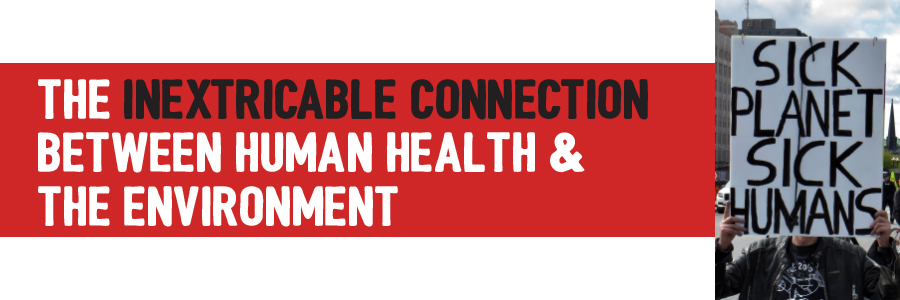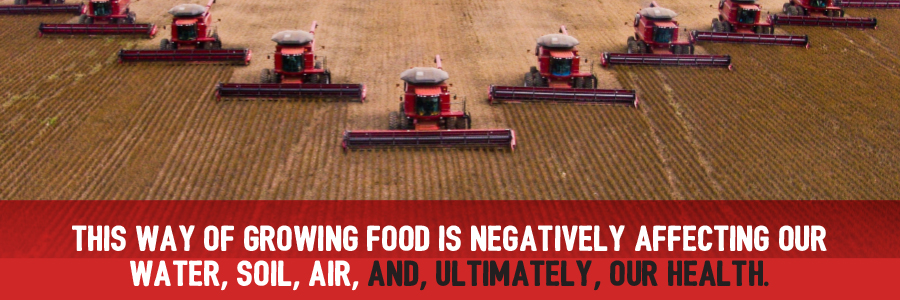


Sign-up for {N}power to get exclusive discounts, newsletters, members-only features, and more!

The mountains, streams, valleys, oceans, deserts, and all things are related to our thoughts and actions. All things are in relationship with each other.
–Nancy Jasmine Wallace, Cherokee Medicine Woman

As the summer comes to a close, think about the times you spent outdoors. Perhaps you had lazy days by a river or lake. Did you hike or camp in a forest? Lounge on a beach? Or maybe you enjoyed your own backyard, tending a garden, or relaxing in the shade. Humans like to be outside; nature is good for us, mentally and physiologically. Research published in 2018 revealed that exposure to greenspaces—defined as natural, open, undeveloped land, as well as urban parks and street greenery—was associated with a reduced risk of type-2 diabetes, cardiovascular disease, stress, high blood pressure, preterm birth, and even premature death. The study also found that populations with more greenspace exposure are more likely to report overall good health in general.1 More recently, a 2019 study found that people who spent at least 120 minutes a week in a natural environment consistently reported higher levels of health and mental wellbeing.2
Humans need nature… and what we do to the environment, we do to ourselves.
Chronic diseases like cancer, type-2 diabetes, cardiovascular diseases, respiratory diseases, autoimmune diseases, and neurodegenerative diseases are the nation’s leading cause of death and disability, killing almost two million Americans each year. Nearly half of the U.S. population suffers from at least one of them, with one in four adults having two or more chronic conditions.3 Chronic disease is not just a burden of aging either—it is becoming more common in young people.4The steady rise of chronic illnesses among humans cannot be blamed on genetics alone, and, indeed, researchers and doctors have begun to recognize that environmental exposure to toxins plays a significant role. As one researcher said, “genetics load the gun, but environment pulls the trigger.” And, according to the World Health Organization (WHO), at least 12.6 million deaths worldwide each year can be attributed to “avoidable environmental risks” and account for nearly a quarter of the global disease burden.5
As humans damage the planet’s environment, we make ourselves sick.

Yet, we continue to pollute our environments and our bodies. Humans continue to cause climate change which in turn drives the loss of vast amounts of biodiversity. We are degrading the topsoil at an alarming rate, with some predicting that if we continue with current farming practices we will be out of topsoil in 60 years. We continue to fell large swaths of forests contributing to more climate change. Many industries are damaging the environment, but a good place to start the conversation—and the change—is with industrial conventional agriculture.
The way we produce our food is not sustainable. In a quest for greater profits, we have come to rely on large-scale, high-intensity monoculture, in which huge areas of land are dedicated to producing a single crop or livestock species, and requires massive amounts of synthetic chemical fertilizers and pesticides. Each year, the U.S. uses more than one billion pounds of pesticides and tens of millions of pounds of synthetic fertilizers, with commodity crops like corn, cotton, soybeans, and wheat accounting for most of their use.6 7 This way of growing food is negatively affecting our water, soil, air, and, ultimately, our health. More than 90 percent of the U.S. population has detectable levels of pesticides or their metabolites in their bodies and most of the exposure comes from the food we eat and our drinking water. Cumulative and chronic pesticide exposure has been linked to numerous health problems, including lower IQs and learning problems, cancer, diabetes, reproductive and endocrine problems, neurodegenerative disorders, cardiovascular disease, and respiratory conditions.8 9 10 11 12
Water quality is compromised by agricultural runoff of water from farm fields. Runoff from fields washes pesticides and fertilizers into lakes, rivers, and streams, impacting drinking water for nearby residents. The University of California at Davis Center for Watershed Sciences studied the link between agriculture and groundwater and found that “agricultural fertilizers and animal wastes are by far the largest regional sources of nitrate in groundwater, contributing 96 percent of the nitrate loading to groundwater in these agricultural regions.”13 Drinking water that contains nitrates has been linked to an increased risk of colorectal cancer, thyroid disease, and neural tube defects. Many studies observed increased risk with ingestion of water nitrate levels that were below regulatory limits.14
Dead zones, and algae blooms resulting from agricultural runoff , are an ever-growing problem as well. An algae overgrowth can choke out aquatic life and make water unsafe for swimming and drinking. Further, algae blooms emit large amounts of methane, a potent greenhouse gas, which scientists say can accelerate global methane emissions up to 90 percent over the next century.15
Conventional agriculture also takes a major toll on the soil. Heavy tilling, multiple harvests of the same crop every year, and the heavy use of chemicals depletes valuable soil nutrients and microbes, requiring farmers to use ever-increasing amounts of chemical fertilizers to stimulate plant growth. The heavy use of pesticides further depletes important soil microorganisms.16 A recent United Nations study found that one-third of the Earth’s fertile soil is being “acutely degraded.” The biggest factor? Conventional agriculture.17 Soil degradation leads to erosion and eventually desertification, making it harder to continue farming and threatening food production.18 Degraded soil also releases carbon into the atmosphere, making it a major contributor to climate change.19 20
And, while we typically think of the fossil fuel industry as the biggest contributor to air pollution, conventional agriculture isn’t off the hook. A study published in 2019 in the Proceedings of the National Academy of Sciences, found that conventional agriculture is responsible for 12 percent of air pollution-related deaths each year. It is also the single largest contributor to health and economic damages, emitted from the application and storage of manure on factory farms and the use of synthetic fertilizer.21
What we have done to the environment has undermined our health, but we can do better. We must do better. More households are buying organic, with concerns about climate change and the environment the most common reasons cited for doing so.22 We’re also actively seeking out companies that are taking steps to reduce their environmental impact.23 According to the Hartman Group, a marketing research group, “In this tense national mood, consumers appear to be more willing to prioritize the greater good in their purchasing than in the past. In a major shift, consumers now report the environment as their major reason for purchasing sustainable or socially responsible products."24 We still have time to re-imagine our future—soil can be regenerated, water quality can be restored, air can be cleared of pollution, and we can all live healthier lives. One of the most effective ways we can make a difference—both individually and collectively—is what we choose to purchase with our dollars. When you make purchases that support organic and regenerative farms and ranches, you are also building a more resilient system of food production. One that prioritizes the environment, soil health, biodiversity, water quality, clean air, and human health.
Historically, pandemics have forced humans to break with the past and imagine their world anew. This one is no different. It is a portal, a gateway between one world and the next. We can choose to walk through it, dragging the carcasses of our prejudice and hatred, our avarice, our data banks and dead ideas, our dead rivers and smoky skies behind us. Or we can walk through lightly, with little luggage, ready to imagine another world. And ready to fight for it.
–Arundhati Roy
Conversations about social justice and environmental justice often happen as two separate dialogues, but these issues are intricately connected. Those who are most affected by exposure to environmental pollution are frequently the very same people who experience social and racial injustice. Researchers are beginning to explore the relationship between the disparate exposure to pollution as a major factor in health inequities among minorities and those of low economic status.25 For example, farmworkers—often undocumented immigrants— are on the frontlines working with harmful pesticides, often with very little training or understanding of how the exposure can affect their health. Studies have shown that pesticides brought into the home on parents’ clothing and skin also put farmworkers’ children at risk.26 One long-term study conducted by researchers at the University of California, Berkeley found that the children of farmworkers, and children who lived near fields where organophosphate pesticides are sprayed, had higher rates of neurodevelopmental problems, including autism, hyperactivity, and reduced IQs.27 28 Early life exposure to environmental toxins has also been associated with increased levels of inflammation in adulthood, increasing the risk for inflammation-related health problems. Socially disadvantaged children are more likely to live in areas with higher exposure to pollution, which increases inflammation and oxidative damage.29
A 2019 analysis by the Union of Concerned Scientists found that African Americans, Latinos, Asian-Americans, and low-income communities in California are exposed to “substantially more” air pollution compared to other demographic groups, with African Americans and Latinos exposed to 43 percent and 39 percent more fine particulate matter compared to white Californians. Fine particulate air pollution poses a serious risk to human health and has been linked with higher rates of cardiovascular and lung diseases, asthma, low birth weight and preterm births, and premature death.30 31 Research has also found that concentrated animal feeding operations (i.e., factory farms) are more frequently located in minority and low-income communities, with residents experiencing higher rates of infant mortality, kidney disease, asthma, and high blood pressure.32 33 34 A large body of research has come to the same conclusion: race and socioeconomic class are both significant determinants of levels of exposure to pollution, including proximity to hazardous waste sites and exposure to air and water pollution. “…the poor and especially the nonwhite poor bear a disproportionate burden of exposure to suboptimal, unhealthy environmental conditions in the United States.”35
As we move forward to create solutions in the fight for environmental justice, we must also confront the racial and social injustices bound up in the fight, for there is no racial justice without environmental justice.



Sign-up for {N}power to get exclusive discounts, newsletters, members-only features, and more!